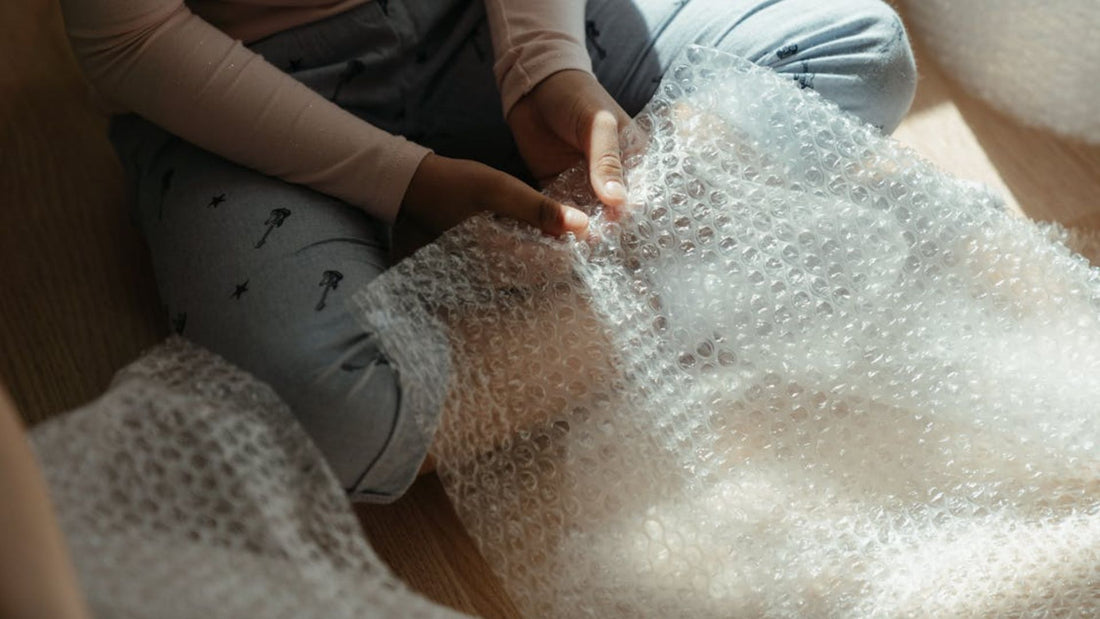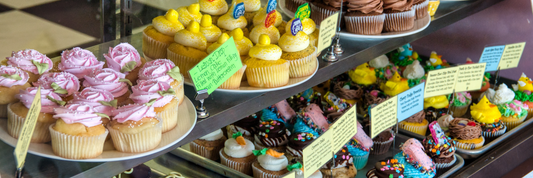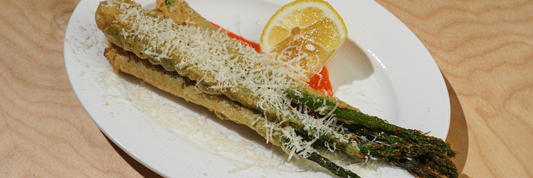Bubble wrap is a type of packaging material that is very familiar and widely used in product packaging. However, due to the increasing awareness of environmental protection from users, more and more businesses are choosing alternative packaging materials, especially small business. In today's article, let's find out more specifically about bubble wrap and its alternatives so that businesses can make the most accurate decisions.
- 3 types of packaging: what is the difference?
- What is mushroom packaging? Why is mushroom packaging better?
- What Is Crinkle Paper? Types of Crinkle Paper Used For Packaging & Shipping
- Foam vs. Bubble Wrap: Which Is Better for Packaging?
- Types of Bubble Wrap for Packaging and Shipping
Bubble Wrap Overview
What is Bubble Wrap?
Bubble wrap is a material used for packaging and protecting fragile items during shipping or storage. It is made up of two plastic film layers with tiny air-filled bubbles trapped in between to provide some cushioning. The bubbles range in size from tiny to large and are usually shaped like rounds or squares.
History of Bubble Wrap
Bubble wrap's story is one of happy accidents! Invented in 1957 by Alfred Fielding and Marc Chavannes, it was originally intended as a textured wallpaper. They achieved this by sealing two shower curtains together with air bubbles trapped in between. While the idea flopped in the wallpaper world, it laid the foundation for something much bigger.
Nearly three years later, in the early 1960s, the rise of IBM computers created a need for safe and secure packaging. Fielding saw the potential of their bubble-filled material as a perfect protective solution for these delicate machines. After demonstrating its shock-absorbing abilities, IBM became the first customer for this new packaging material. In 1960, Sealed Air, the company Fielding and Chavannes co-founded, officially launched bubble wrap as a product.

Characteristics of Bubble Wrap
Bubble wrap's popularity goes beyond the satisfying sound of popping. It’s a versatile and effective packaging material with several key characteristics, including:
- Material: The foundation of bubble wrap is polyethylene, a type of plastic chosen for its good balance of strength and flexibility. This allows bubble wrap to be adaptable for various packaging needs, from delicate electronics to bulky furniture.
- Structure: The air bubbles, the namesake feature, are evenly distributed throughout the plastic sheet. These air pockets are the heart of bubble wrap's protective abilities.
- Protection: During transportation, fragile items can experience bumps and shocks. Bubble wrap excels at safeguarding these items. The air bubbles act like tiny shock absorbers. When an impact occurs, the bubbles compress, absorbing the energy and distributing the pressure more evenly across the surface. This helps prevent damage to the product inside the packaging.
- Usability: Bubble wrap offers several user-friendly features. Its lightweight nature makes it easy to handle and incorporate into packaging without adding excessive weight. Additionally, the material's flexibility allows it to be easily wrapped around oddly shaped items, conforming to unique contours for a snug fit. This ensures all parts of the product receive proper cushioning.
For these characteristics, it’s can be used in many applications. However, with the rising of environmental awareness, people are searching for eco-friendlier alternatives to this material.
Type of Buble Wrap
- Kraft Paper Bubble Wrap: Kraft paper bubble wrap is an eco-friendly alternative to traditional plastic bubble wrap. It consists of layers of kraft paper with small air pockets in between. The air pockets provide cushioning and protection similar to regular bubble wrap, but with the added benefit of being recyclable and biodegradable.
- Foam Bubble Wrap: Foam bubble wrap combines the cushioning properties of traditional bubble wrap with the added protection of foam material. It typically features a layer of foam on one side and small air bubbles on the other. Foam bubble wrap is commonly used in industries such as electronics, glassware, or artwork, where maximum protection is required.
- Anti-Static Bubble Wrap: Anti-static bubble wrap is designed specifically to protect electronic components and other static-sensitive items. It incorporates an anti-static coating or additive that helps dissipate static electricity, preventing potential damage to sensitive devices.
- Eco-Friendly Bubble Wrap: Eco-friendly bubble wrap, also known as biodegradable or compostable bubble wrap, is made from materials that break down more easily in the environment compared to traditional plastic bubble wrap.
Bubble Wrap Applications
Bubble wrap's uses extend far beyond its signature pops. This versatile material offers a surprising range of benefits:
- Packing Powerhouse: Bubble wrap excels at safeguarding fragile items during shipping. It provides essential cushioning for delicate electronics, artwork, and even furniture, preventing damage during transport.
- Insulation on the Go: The trapped air within the bubbles offers some level of insulation. This makes bubble wrap a suitable option for protecting temperature-sensitive items during transport or storage, ensuring they arrive (or remain) in their desired state.
- Storage Savior: Delicate items require extra care even when not being shipped. Bubble wrap can be used effectively in storage to provide cushioning and prevent scratches or nicks, keeping your belongings safe.
- Construction Ally: Bubble wrap's usefulness extends beyond standard packaging. In construction applications, it can act as a vapor barrier, helping to control moisture and protect sensitive materials from water damage.
Overall, bubble wrap is used for not only shipping, transportation, but also storage and construction. However, while it’s typically made from plastic, it can be a part of plastic waste.

Ecological Alternatives to Bubble Wrap
As environmental consciousness grows, the need for sustainable packaging solutions becomes increasingly crucial. There are several eco-friendly alternatives offer comparable protection while minimizing environmental impact.
- Paperboard: Produced from recycled paper, paperboard provides a strong and durable option for boxes, inserts, and dividers. This recycled content translates to a smaller environmental footprint compared to virgin materials.
- Crinkle Paper: A fantastic way to reuse old paper, shredded paper provides cushioning for products during shipping. This approach minimizes waste by giving new life to paper that might otherwise be discarded.
- Molded Pulp: This biodegradable material utilizes recycled paper and wood fibers, making it a sustainable choice. Molded pulp excels at creating form-fitting protective packaging, offering excellent product security.
- Air Pillows: These lightweight pillows are typically made from inflatable plastic film. While not entirely plastic-free, they often use less material compared to bubble wrap. Additionally, some manufacturers are developing air pillows made from bio-based plastics, offering a more sustainable option.
The optimal choice among these alternatives depends on your specific product requirements. Consider the item's fragility, weight, and desired level of protection.
Conclusion
In conclusion, bubble wrap's reign as king of protective packaging is challenged by environmental concerns. Limited reusability and complex recycling highlight the need for change. Thankfully, innovation is bringing eco-friendly alternatives like recyclable bubble wrap and bio-based air pillows.




